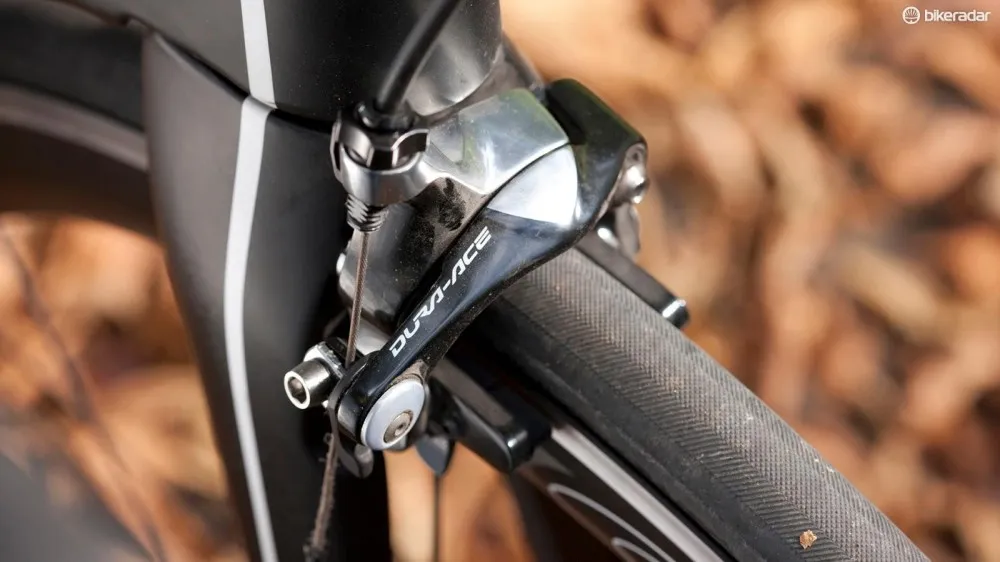Speed is a compelling thing – we all appreciate it on the flat, some of us love it on the descents, and all of us would like more of it on ascents. So the unifying factor for everyone’s next bike is one that helps us go quicker all the time, and Fuji's Transonic just might have an answer to that craving.
- Highs: Fast, stable, fun… and did we mention fast?
- Lows: Not the most comfortable saddle
The Transonic is the latest aerobike to join the party (it launched at the 2014 TdF with Team NetApp-Endura). Unlike most makers, Fuji makes no claims about being ‘fastest in the world’, merely stating that in the A2 Wind Tunnel it's faster than its stablemates, the Altamira and SST (65s faster than the SST, 55s faster than the Altamira over 40km at 300 watts, to be precise).

Direct-mount Dura-Ace anchors can be found both front and rear, with the back one seatstay-mounted for easier maintenance
At the business end, an aero contoured head tube flows into the fork crown, which hosts a Dura-Ace direct mount front brake. Out back the bladed seat tube contours around the rear wheel and, unlike most aero machines, the rear brake is seatstay mounted. The reason for this is ease of maintenance in race situations – under-BB brakes are difficult to adjust on the road – and it seems to be starting a trend, with Lapierre taking a similar approach for its Aircode. We like that the aero-bladed seatmast (using an inbuilt wedge binder) has been grip-taped on its leading edge where the clamp hits, providing a rock solid fixing without any slipping – a common fault on lots of aero bikes.
On the flat the 1.1 is TT bike-quick and in rolling terrain its brutally efficient ride makes short inclines easy. Parallel 73-degree angles and a wheelbase that just tops 1m combine to produce super-reactive steering and stability. On ascents, the frame's inherent rigidity means it's a natural climber, helped by the shape of the 910 bar. It shifts forward of the stem before angling back towards the hoods and ovalising, making for a hold that enables you to pull the bars while pushing the pedals over the crank rotation's dead spot. The gearing of 52/36 and 11-25 is good, though during the longest climb on our second 95-mile test ride we’d have welcomed a lower gear.

Handling is ultra stable and responsive
We wouldn’t describe the Transonic as comfort orientated – it's certainly more firm than fluid – but the superb Open Corsa CX 25 tyres help comfort levels massively. These are supple, super grippy in wet and dry conditions and have enough volume to kill most road buzz. Impressively the 1.1 has clearances for up to 28c rubber, rare for an aero bike.
The wheels are mid-width at 19c and reasonably stable in crosswinds with no braking issues thanks to their alloy brake tracks. The only thing we’d fault the Fuji on is the saddle – it's too stiff in the hull to offer much comfort and is the one aspect of this bike that we’d change.






